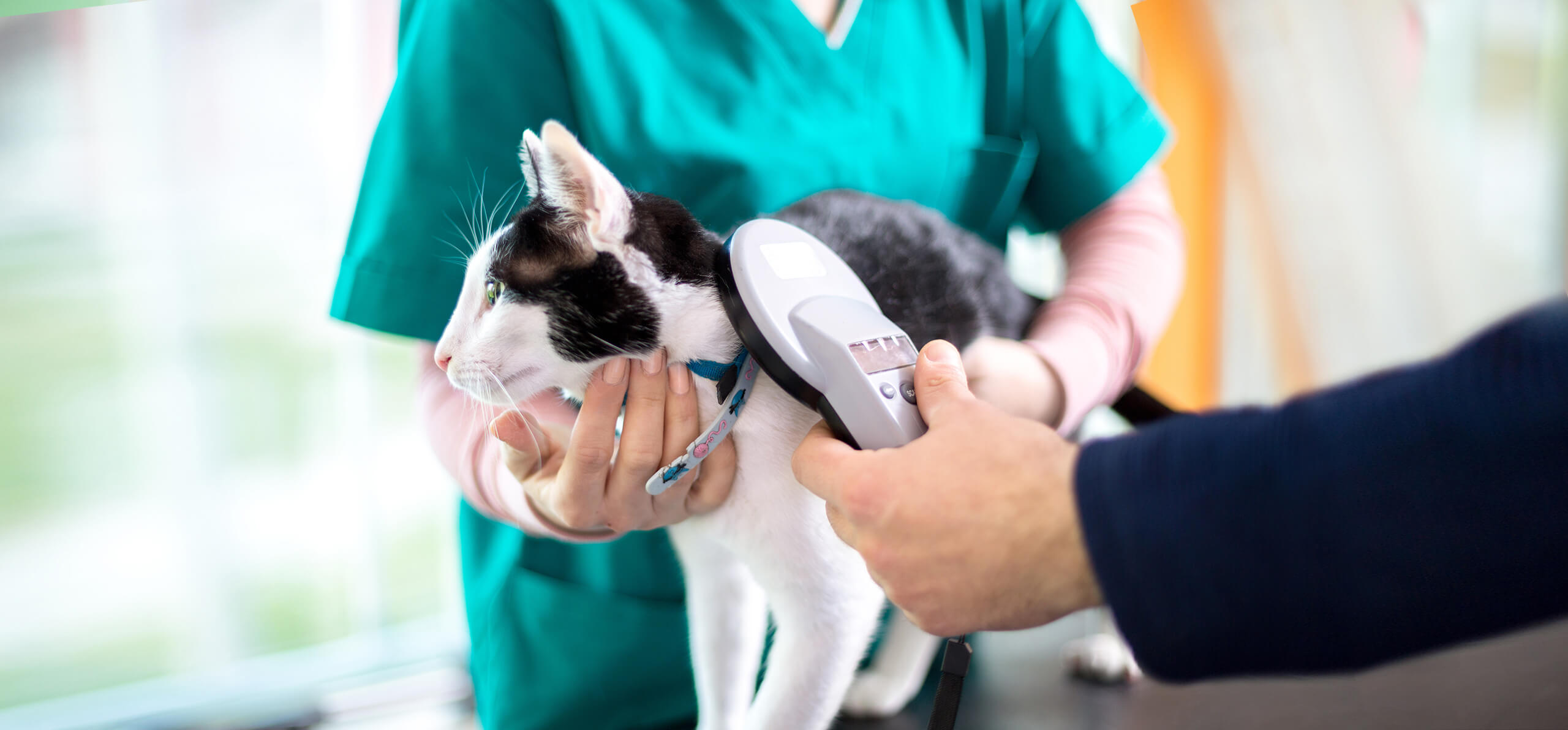Each microchip is registered with a microchip lookup number that’s linked to your name and contact information. Chip manufacturers add this information to a pet microchip registry.
Does implanting the microchip hurt?
Veterinarians use a large-bore needle that doesn’t require an anesthetic, similar to vaccinations. The microchip is implanted in your pet’s back near the shoulder blades and will pinch a little like having blood drawn. Many pet parents choose to have their cat or dog microchipped during spaying or neutering so their pet is asleep and won’t even feel the pinch.
Having your cat or dog microchipped at a scheduled appointment is probably the most cost-effective too, because you’re already paying for that visit. On its own, microchipping a dog or cat can cost about $50 depending on what part of the country you live in, but local animal shelters or rescue centers may charge less. Although complications are rare, it’s recommended that your veterinarian microchip your pet because of where and how it’s injected.
Who reads the microchips?
Most veterinarians and shelters have a cat or dog chip reader they use to gently scan your pet so they can access the microchip information. Ask your veterinarian about the most common microchip used in your area so it can be read by most local shelters, since many veterinarians and rescues don’t have universal chip readers. Keep in mind: microchips aren’t GPS devices and only work if they’re scanned properly. Once the microchip is read, the chip manufacturer can be contacted and the unique code is used to identify your pet and contact you.
What is the microchip lookup registry?
Your pet microchip is only as good as its registration, so be sure to log all your contact info with the chip manufacturer and keep it current, especially if you move or change phone numbers.
Make it a habit to have your veterinarian scan your microchipped dog or cat during routine appointments to ensure the chip still reads accurately and hasn’t moved.
Is a microchip the only protection you need?
A microchip is only part of your pet’s I.D. protection. Your dog or cat should also have a collar with tags. Use breakaway collars for cats so they don’t get caught when they climb. Your phone number is the most important identification on the tag. Your pet’s name and even your address aren’t mandatory. Don’t assume people who find lost pets will know they have a microchip, but if your phone number is on your tag, people will know how to reach you.
Of course, the best protection is not letting your pet run free. Always keep your dog or cat in sight because no I.D. system can help return pets if they’re lost where no one can find them.
Also, if you’re moving or traveling abroad with your best pal, research which microchips are popular overseas. The United States uses 125 kHz and 128 kHz microchips, but Europe uses 134.2 kHz chips. Some U.S. microchip manufacturers are now implanting European frequencies as well.
There are other, nonpermanent tracking options available, such as GPS collars, which offer the advantage of real-time location tracking. However, they don’t provide a permanent means of identification so a microchip is always recommended in addition to the GPS devices.
If your beloved cat or dog isn’t microchipped yet, schedule an appointment for August 15th, National Check the Chip Day! If your pet is already protected, remember to have the microchip checked by your veterinarian that day.

